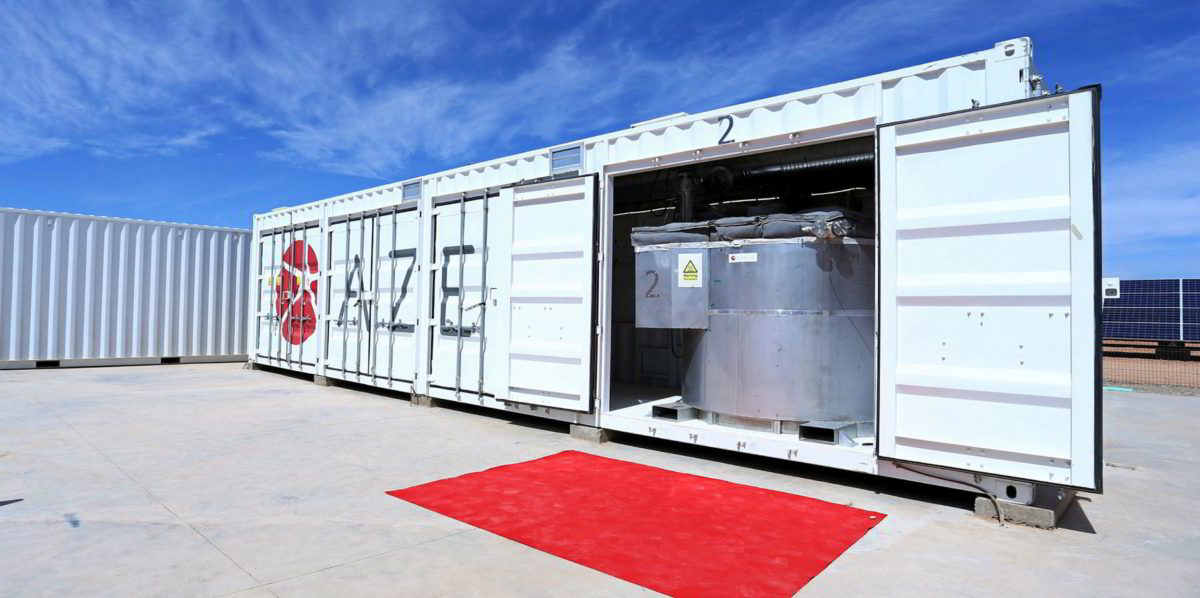California needs to deploy up to 55 GW of long duration energy storage by 2045 and 2 GW to 11 GW by 2030, in order be on track to achieve the state’s 100% clean electricity goals, according to a new report from the California Energy Storage Alliance (CESA).
To put those numbers in context, 55 GW is more than 150 times the amount of energy storage that has been deployed in the state since 2010. Including planned storage development, it is nearly 12 times all storage currently contracted or in development within California.
While it would be easy to dismiss these figures as a storage-focused organization trying to advance its own goals, it’s not just CESA recognizing the need for exponential deployment figures.
The California Public Utilities Commission (CPUC) has put together models outlining that as much as 70 GW of energy storage will be needed to achieve the state’s goal of 100% renewable and zero-carbon electricity resources by 2045. The CPUC also determined that “all storage needed beyond 2030 will have to have discharge for durations of six to eight hours or longer.”
Environmental benefits and industry response
Deploying the level of storage that CESA is modeling for would allow the state to retire 10 GW of fossil fueled generation, reduce system capacity costs by $1.5 billion per year from 2031-2045 and increase renewable energy utilization by 17% while decreasing in-state fossil fuels usage for electricity generation by 25%.
The study has been met with positive reactions across the storage industry.
“We commend CESA for bringing a spotlight to the long duration energy storage issue and it’s vital importance to creating a zero-carbon electric grid,” said Joe Zhou, CEO of Quidnet Energy, a provider of modular pumped hydro technology for long duration energy storage. “The level of effort required to transition to a carbon-free power system is substantial and requires solutions that can deploy cost-competitively and at the necessary scale… This report highlights the urgency of the need for long-duration storage in the state.”
Reform and regulate
Current procurement and compensation mechanisms used to deploy storage and other resources won’t cut it for this level of deployment, which is why the report also calls for a reform of these mechanisms. Specifically, the report’s authors call on the state to update the Integrated Resource Planning (IRP) proceeding and the Resource Adequacy (RA) proceeding to now include:
- Base modeling and procurement activities with clear visibility to 2045 resource needs, actively directing procurement towards those targets, focusing on least-regret resources, including those with long lead times and high capital costs that will provide significant system benefit.
- Employ early long duration energy storage procurements to meet multiple policy objectives, such as increasing the resiliency and reliability of locally constrained areas and accelerating retirement of fossil fuel power plants to improve of air quality, with an focus on historically disadvantaged communities.
- Signal the imperative for early action to all load serving entities through near term procurement targets, portfolio mandates, modifications to individual procurement plans or other mechanisms to establish and enforce procurement.
This report is not the first to suggest that California’s RA and IRP proceedings need to be reformed in order to give long duration storage the tools necessary to be deployed at such a large scale so quickly. Back in August, William Conlon, president of thermal storage startup, Pintail Power, outlined for pv magazine how current RA standards are holding back long duration storage’s potential.
“Four hours is what California wants for RA,” Conlon said. “If you provide eight hours you only get paid for four hours. We’re at four hours today because that’s what you get paid for.”
This content is protected by copyright and may not be reused. If you want to cooperate with us and would like to reuse some of our content, please contact: editors@pv-magazine.com.









By submitting this form you agree to pv magazine using your data for the purposes of publishing your comment.
Your personal data will only be disclosed or otherwise transmitted to third parties for the purposes of spam filtering or if this is necessary for technical maintenance of the website. Any other transfer to third parties will not take place unless this is justified on the basis of applicable data protection regulations or if pv magazine is legally obliged to do so.
You may revoke this consent at any time with effect for the future, in which case your personal data will be deleted immediately. Otherwise, your data will be deleted if pv magazine has processed your request or the purpose of data storage is fulfilled.
Further information on data privacy can be found in our Data Protection Policy.